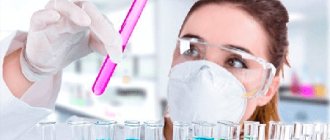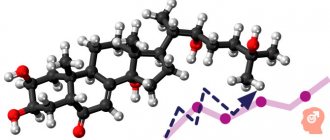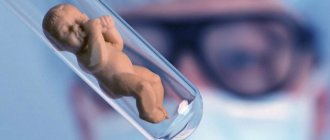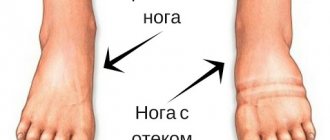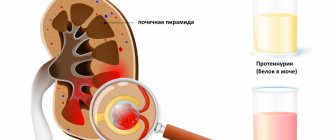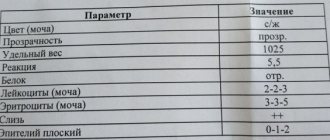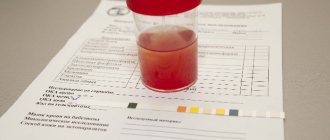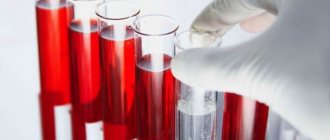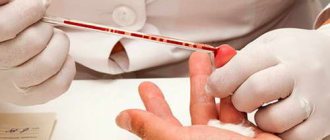Rheumatoid factor (RF) is a group of autoantibodies that react to particles entering the bloodstream from affected joints. Bacteria, viruses and other internal factors influence the properties of the protein. The body's immune system perceives them as foreign particles, as a result of which antibodies begin to be actively produced, which are detected in the laboratory.
The representative of rheumatoid factor is predominantly immunoglobulin M. At the beginning of the development of the disease, it is produced only in the joints in which pathological changes occur, but then it is also produced in the red bone marrow, spleen, lymph nodes, and subcutaneous rheumatoid formations.
Little is known about the nature of rheumatoid factor, but we can say for sure that RF (rheumatoid factor) in a biochemical blood test indicates the presence of autoimmune and inflammatory processes.
This analysis is prescribed in the following cases:
- If rheumatoid arthritis is suspected (symptoms include pain, swelling, impaired mobility in the joints, as well as the formation of characteristic thickenings in the form of nodules under the skin);
- Sjögren's syndrome (patients complain of xerophthalmia (dry and burning eyes) and xerostomia (dry mouth));
- Chronic inflammatory diseases of unknown etiology;
- As an additional diagnostic method for autoimmune diseases;
- Included in the complex of rheumatoid tests.
Rheumatoid factor in the blood indicates many diseases, but one of the main ones is rheumatoid arthritis, which affects every 3 residents of Russia.
At the Yusupov Hospital, qualified rheumatologists are always ready to offer you any medical services. The department's specialists provide medical and advisory assistance to all rheumatology patients. The Yusupov Hospital uses modern instrumental and laboratory research methods to identify diseases at the earliest stages. There is a laboratory on the territory of the hospital complex, so you will not need to go to other medical institutions to get tested. The Yusupov Hospital was created to make it as comfortable as possible for patients to stay in the hospital.
Detailed description of the study
Rheumatoid factor (RF) is a group of antibodies to human tissues that are formed as a result of disorders in the immune system. The name of these antibodies explains their frequent detection in rheumatoid arthritis. However, RF may be elevated in other rheumatic and inflammatory diseases. Detection of RF is an important part of the diagnostic search when determining the causes of joint inflammation and confirming the presence of rheumatoid arthritis. This disease of an autoimmune nature develops mainly in women over 40-50 years of age. The reasons for it have not yet been sufficiently studied. The role of genetic and hormonal factors in combination with the adverse effects of the external environment is assumed. The formation of various antibodies to joint tissues leads to inflammation in them. Mostly small joints of the hands and feet are affected, inflammation is accompanied by redness and pain, and impaired motor activity. An important diagnostic sign of rheumatoid arthritis is stiffness in the limbs after waking up, which goes away within an hour. Chronic inflammation of the joints ultimately leads to their destruction and deformation of the hands and feet. RF is detected in more than 75% of patients with rheumatoid arthritis. Its titer weakly correlates with disease activity, but patients with high titers tend to have more severe rheumatoid arthritis. Sjögren's syndrome is a disease in which there is also an increase in RF levels. It is based on progressive damage to the salivary and lacrimal glands due to their erroneous destruction by the human immune system. Violation of salivary secretion is manifested by dry mouth, destruction of the lacrimal glands - dry eyes. There is insufficient hydration of the skin and mucous membranes. In addition, high RF titers can be found in a number of other diseases, which include: systemic lupus erythematosus, polymyositis, tuberculosis, syphilis, viral hepatitis, infectious mononucleosis, subacute septic endocarditis, autoimmune hepatitis and other autoimmune liver lesions. An increase in RF titer is sometimes observed among healthy people over 60 years of age, as well as during pregnancy and after blood transfusions (especially in the case of frequent blood transfusions). For a more accurate diagnosis of rheumatoid arthritis, it is recommended to determine not only the RF, but also the antibody titer to the cyclic citrulline-containing peptide. The use of both tests increases diagnostic sensitivity.
Preparing for the study
No special preparations are required. It is recommended to donate blood on an empty stomach in the morning. You must stop drinking alcohol 24 hours before the test. It is advisable to refrain from smoking an hour before the study. The test results can be affected by taking a number of medications. In such cases, their use may be temporarily suspended in consultation with the doctor. If discontinuation of drugs is not possible, you must inform the laboratory staff about this. Children are given small amounts of water for several hours before donating blood. If additional preparatory measures are necessary, detailed recommendations will be provided by the attending physician.
References
1. Chaltsev, B. D., Vasiliev, V. I., Palshina S. G. [etc.]. Clinical guidelines for the diagnosis and treatment of Schörgen's disease with anticentromere antibodies. Scientific and practical rheumatology, 2019. 2. Rheumatoid arthritis. Clinical recommendations. approved Ministry of Health of Russia, 2021. - URL: https://legalacts.ru/doc/klinicheskie-rekomendatsii-revmatoidnyi-artrit-utv-minzdravom-rossii/ (access date: 02/11/2021). 3. Croia, C, Bursi, R, Sutera, D, One year in review 2021: pathogenesis of rheumatoid arthritis. Clinical Experience in Rheumatology, 2021.
Interpretation of results
To obtain a competent interpretation of the results of a blood test for rheumatoid factor
you need to see a doctor. When assessing them, it is necessary to take into account a large number of different factors that only a specialist can determine. The test results cannot be used for self-diagnosis. It is important to remember that self-medication can cause irreparable harm to health.
In the absence of pathologies, RF activity is low. Normally it is up to 14 IU/ml. An increase in indicators may indicate pathologies such as arthritis, biliary cirrhosis, cryoglobulinemia, malignant neoplasms, etc. A slight excess of the norm is possible in old age.
Sometimes patients present with characteristic symptoms of rheumatoid arthritis, but RF levels remain within normal limits. In such cases, a comprehensive examination is carried out to establish an accurate diagnosis and choose treatment tactics. Test results are required to diagnose Sjögren's syndrome and to confirm rheumatoid arthritis. The results obtained are considered in conjunction with the clinical picture and medical history. It is impossible to confirm or refute the diagnosis based on test results alone.
How to prepare and take tests
Blood is drawn from a vein in the morning on an empty stomach, 8-12 hours after the last meal. In emergency cases and in infants - without prior preparation.
Seven days before the test, do not introduce complementary foods to your baby, but feed as usual the day before. The day before the test, in an older child, avoid eating fatty foods and physical exercise.
Are norms constant indicators?
Yes. However, numbers and units of measurement in different laboratories may differ, depending on the equipment, reagents and methods used.
Norms of rheumatoid factor in the blood
In a healthy body, rheumatoid factor should be absent or present in minimal quantities. In this case, the person lives a normal, full life. The maximum norm is 25 IU per 1 ml of blood
.
Rheumatoid factor is determined equally for everyone and does not depend on gender. The normal value differs only for older people (after 50). In a child (under 16 years of age), this figure should be on average 12-12.5 IU per ml of blood
.
Rheumatoid factor, which is recommended for all people over 50 to be tested for, makes it possible to diagnose the following diseases:
- rheumatoid arthritis (diagnosis, blood test);
- various autoimmune diseases;
- rheumatism, etc.
When a child needs a biochemical blood test:
* Yellowness of the skin and/or mucous membranes is a suspicion of hepatitis or stagnation of bile in the gallbladder.
* Colorless stools - possible hepatitis (sometimes occurs without jaundice) or a disease of the gastrointestinal tract (for example, pancreatitis).
* Vomiting and diarrhea - often associated with pancreatitis or viral hepatitis A.
* Strong thirst and hunger, rapid weight loss and fatigue, frequent urination - indicates diabetes.
* Poor appetite and weight gain . It is not necessary that the child is sick, but he needs a comprehensive examination.
* Nausea, abdominal pain, repeated indomitable vomiting and a pronounced odor of acetone from the mouth are signs of diabetic ketoacidosis (complications of diabetes mellitus - a life-threatening condition) or an acetonemic crisis in neuro-arthritic diathesis.
Read more about neuro-arthritic diathesis here
Biochemical blood test - an assistant in assessing the functioning of the body
Allows you to judge the condition of many organs (liver, kidneys, heart, pancreas), the metabolism of proteins and some important substances.
Norms
| Indicator and units of measurement | Age | ||
| 1 month | Up to 1 year | From 1 year to 14-15 years | |
| Total protein, g/l | 49-69 | 57-73 | 62-82 |
| Albumin, g/l | 34-44 | 36-49 | 37-55 |
| Total bilirubin, mmol/l | 17-68 | 3,4-20,7 | |
| Direct/bound bilirubin | 4,3-12,8 | 0,83-3,4 | |
| Bilirubin indirect/unbound | 12,8-55,2 | 2,56-17,3 | |
| ALT, U/l | 50-55 | Up to 40 | |
| AST, U/l | 73 gradually decreasing to 60 | 38-40 | |
| Alkaline phosphatase, U/l | 130-700 | 100 -600 | |
| LDH, U/l | 150-785 | From 1 to 6 months – 160-437, from 7 months to a year – 145-365 | 100-290 |
| Cholesterol, mmol/l | 1,6-3,0 | 1,8-4,9 | 3,7-6,5 |
| Triglycerides/mmol/l | 0,2-0,86 | 0,39-0,93 | 0,4-1,86 |
| B-lipoproteins, g/l | 1,5-3,5 | 1,4-4,5 | 3,55-5,5 |
| Glucose, mmol/l | 1,7-4,7 | 3,3-6,1 | |
| Uric acid, mmol/l | 0,14-0,29 | 0,14-0,21 | 0,17-0,41 |
| Creatinine, mmol/l | 35-110 | ||
| Urea, mmol/l | 2,5-4,5 | 3,3-5,8 | 4,3-7,3 |
| Amylase, U/l | up to 120 | ||
Decoding
| Index | Meaning | Increased | Downgraded | |
| Squirrels | They reflect metabolism and participate in the transfer of hormones, fats, and bilirubin. | Dehydration, inflammatory processes (autoimmune, infectious), chronic hepatitis. | Prolonged fever, poisoning, diabetes, diseases of the gastrointestinal tract, liver and kidneys. | |
| Glucose | Nourishes our cells. | Diabetes mellitus, diseases of the pancreas, liver and kidneys. | Insulin overdose, poisoning, fasting. | |
| Creatinine and urea | They are formed during the breakdown of proteins and are excreted from the body by the kidneys. | Renal dysfunction, intestinal obstruction, endocrine diseases, protein-rich diet, dehydration (diarrhea/vomiting). | Infections, malnutrition, liver disease. | |
| Bilirubin | The pigment is formed during the breakdown of red blood cells and turns the skin yellow. | Hepatitis, cholelithiasis, cholecystitis, vitamin B12 deficiency, malignant tumors. | Does not have much diagnostic value. | |
| Amylase | Pancreatic enzyme | When the pancreas is damaged (for example, pancreatitis), the enzyme enters the blood. | — | |
| Alanine aminotransferase (ALT) and Aspartate aminotransferase (AST) | Enzymes produced in the cells of the liver, kidneys, muscles and heart. | Problems with the liver, kidneys or heart. | — | |
| Triglycerides and cholesterol | Reflects the metabolism of fats in the body. | They rarely deviate from the norm in children. | ||
| Uric acid | The end product of the breakdown of purines (found in meat, fish, smoked meats, canned food). | With food comes a lot of purines, neuro-arthritic diathesis. | Kidney damage, hepatitis, hereditary disorder of uric acid metabolism (xanthinuria). | |
| Alkaline phosphatase | Takes part in the exchange of calcium and phosphorus. | Hepatitis, inflammation of the gallbladder, rickets. | Excess vitamin D, decreased thyroid function. | |
Note: the tables show the most commonly used indicators. If necessary, the doctor will prescribe an extended study.
General information
Rheumatoid arthritis is a chronic inflammatory disease. First of all, one or more joints are affected. Often pathological changes are irreversible; over time they only progress. Under the influence of various factors, the disease usually worsens. As the pathological process progresses, it can affect internal organs, the nervous system, and blood vessels. Complications can develop at any stage of the disease. Effective treatment is required to stabilize the patient's condition. This disease is characterized by symptoms such as stiffness of joint movement (especially immediately after waking up), fever, joint pain, and weakness.
Sjögren's syndrome affects the exocrine glands. There are primary and secondary diseases. Most often it affects women (about 90% of all patients). In most cases, the salivary or lacrimal glands are affected.
